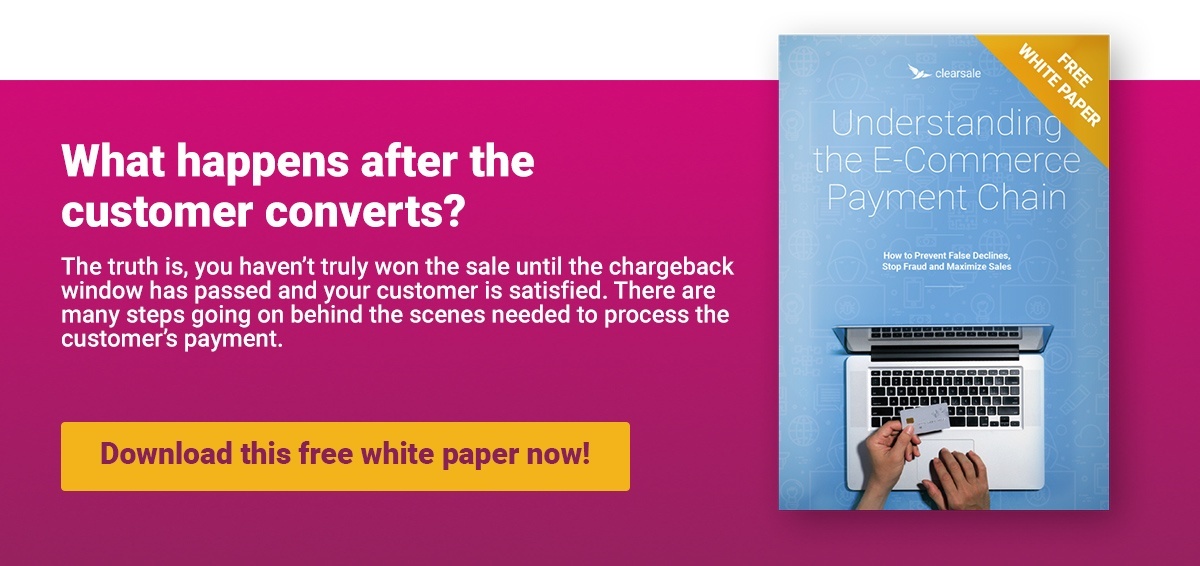6 Powerful Weapons Consumers Can Use in the Fight Against Fraud
Many customers feel nervous about trusting sensitive personal information to an e-commerce merchant they haven’t dealt with before. And they’re right to be cautious: Credit card fraud is on the rise — hitting an estimated $4 billion in 2016. But that doesn’t mean that fraud has to be part and parcel of doing business online.
Credit card issuers and merchants are heavily involved in the battle against fraud, integrating new technologies — like chip cards and two-factor authorization — to defend their reputation and protect revenue. But the fraud prevention army shouldn’t begin and end there.
How Merchants Can Help Fight Fraud
Merchants can (and should) empower customers to battle cybercriminals and increase the security of online transactions by educating and encouraging them to take these preventive actions:
1. Use a Credit Card’s Notification Features
Cardholders can modify settings on their credit card issuer’s website or mobile app so they’re notified when card transactions are processed. Users can base selections on criteria like dollar amount thresholds or purchase type (e.g., online, in-person); they can even be notified of every transaction. With these notifications, customers are immediately warned of suspicious activity and can prevent a fraudster from doing additional financial damage. Customers should also modify user settings so they’re alerted when any changes — like email address or phone number updates — are made to their accounts.
2. Shop on Secured Websites
Customers should make purchases only from online merchants who use secure networks (their web addresses will begin with https://) and shopping carts that comply with PCI Security Standards. And if a website looks suspicious (it’s poorly written, it lacks product details, etc.), customers should consider researching the merchant and looking for site reviews before submitting sensitive personal data.
3. Beware of Phishing and Spoofing
It’s easy for customers to get tricked into providing personal information in response to an email from a seemingly legitimate company (a process known as “phishing”). Fraudsters may even use actual company logos, authentic-sounding return email addresses and realistic-looking links to “spoof” unsuspecting customers into providing sensitive data. Customers can prevent fraud by hovering their mouse over links to ensure they’re being directed to a trusted source.
In addition, customers should:
- Avoid clicking on any links in the email and instead open a new browser window and type the company’s web address.
- Report suspicious emails directly to the company from whom the email allegedly came. (PayPal is so often the victim of spoofed emails, they’ve created a dedicated email address for customers to send suspicious communications.)
Customers should be wary of any email that asks for personal information — most legitimate companies will never ask for sensitive data this way.
4. Monitor Credit Reports
The law entitles customers to a free yearly credit report from each of the three major reporting agencies (Equifax, Experian and TransUnion). Customers should review reports from each agency every four months (rotating among agencies) to look for abnormal activity, like the unauthorized opening of accounts or credit cards.
To further protect their credit, consumers should consider adding fraud alerts to their credit reports. Although these alerts don’t eliminate fraud completely, they do slow fraudsters down. Consumers can go one step further by freezing their credit, which protects them against having any new creditor access their credit.
5. Use Virtual Credit Cards
Many card issuers let customers create virtual card numbers: randomly generated, one-time-use credit card numbers that can be used for shopping with online merchants. The merchant never sees the customer’s regular credit card number, boosting customers’ confidence in shopping with unfamiliar merchants.
6. Use Alternative Payment Methods
More and more e-commerce retailers are accepting payment services like Apple and Android Pay. These methods are frictionless for customers and are touted as a more secure form of payment than credit cards. These services use tokenization technology, replacing credit card information with other data, which means a customer’s actual credit card data is never used or accessed.
When it comes to fraud prevention, merchants, customers and the entire payment chain must work together to beat fraudsters at their own game. But e-commerce retailers should also leverage another powerful ally in this fight: a robust fraud protection solution that works 24/7/365 to identify subtle fraud risk indicators and to defend the reputation and revenue of online businesses.
If you think you’re protected fully against card-not-present fraud, you might want to think again. Download our free ebook, “Online Credit Card Fraud Risk: The Ultimate Guide to Growing e-Commerce Sales Safely,” to see if you’re doing all you can to protect your growing business. Then contact a ClearSale credit card fraud analyst to learn how our multilayered approach can prevent fraud attacks and protect your business against costly chargebacks.
 Sarah Elizabeth
Sarah Elizabeth